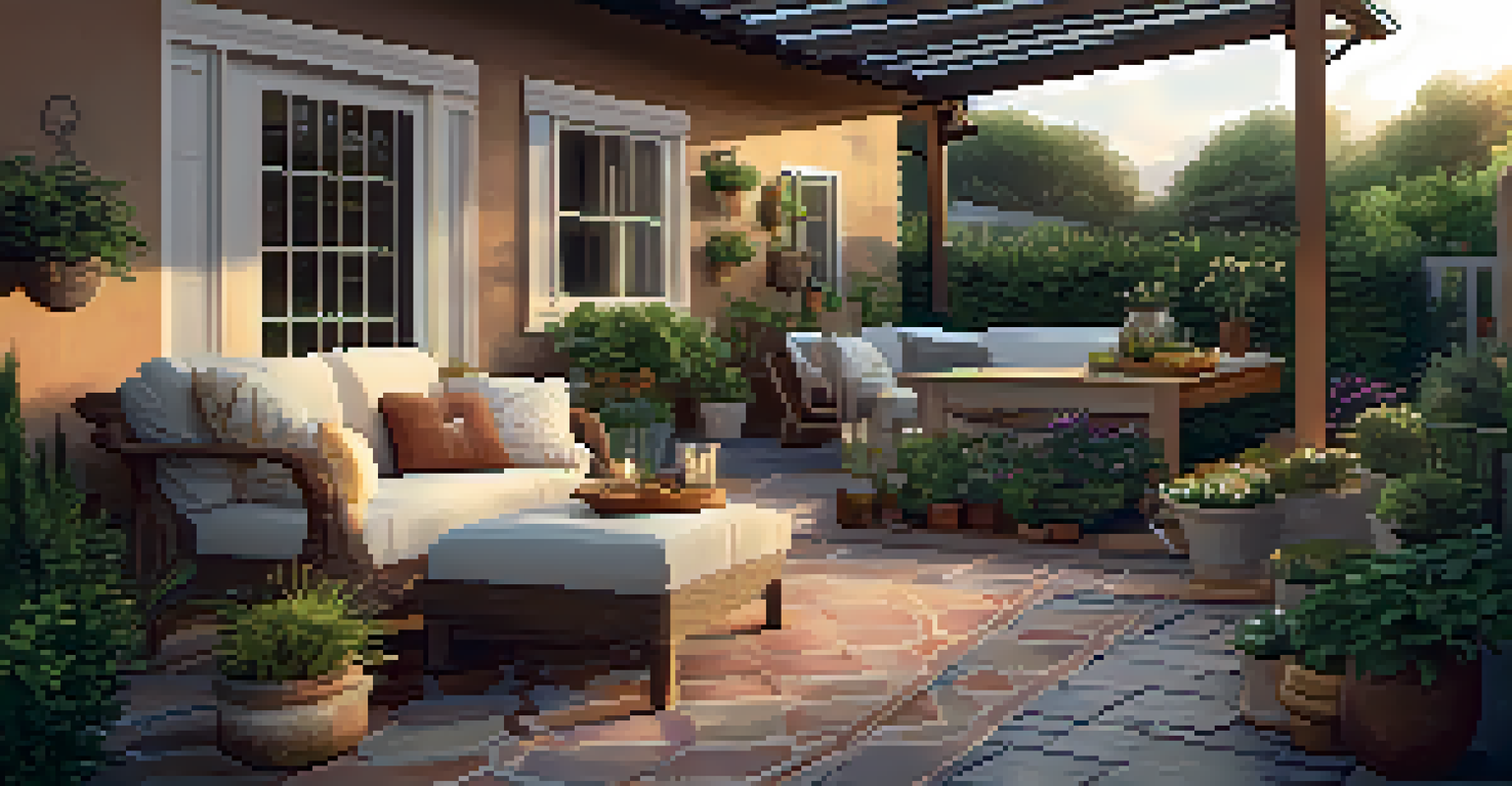How to Prepare Your Home's Exterior for Inspection

Start with a Thorough Cleaning of Your Home's Exterior
Before any inspection, it’s crucial to give your home's exterior a good scrub. This includes washing the siding, windows, and doors. A clean surface not only looks better but also helps identify any potential issues like mold or mildew that might need addressing.
A clean home is a happy home.
Consider using a pressure washer for tougher grime, but be cautious not to damage any surfaces. Pay special attention to areas that might accumulate dirt, such as around gutters or patios. A clean space sets a positive tone for the inspection.
After cleaning, take a step back and assess the overall appearance. Is everything looking sharp and well-maintained? A tidy exterior can create a favorable impression and might even boost your home's value.
Inspect and Repair Your Roof and Gutters
Your roof is one of the most critical components of your home's exterior. Inspect it for missing shingles, leaks, or any signs of wear and tear. If you notice any issues, it’s best to address them before an inspection.

Don't forget about your gutters! They should be clear of debris and functioning properly to ensure water flows away from your home. Clogged gutters can lead to water damage, which could be a red flag during an inspection.
Clean Your Home's Exterior
A thorough cleaning sets a positive tone and helps identify potential issues before an inspection.
If you’re uncomfortable inspecting these areas yourself, consider hiring a professional. It’s always better to be safe than sorry when it comes to your roof and gutters, as they play a significant role in your home’s protection.
Check Windows and Doors for Functionality
Next on your list should be the windows and doors. Open and close each one to ensure they operate smoothly. Look for any drafts or gaps that could indicate poor sealing or damage.
The first impression is the last impression.
If you find any issues, like cracked glass or rotting frames, take steps to repair or replace them. Not only will this enhance your home's energy efficiency, but it also shows that you care about maintenance.
Also, ensure that all locks are functional. A secure home is a well-maintained home, and a potential buyer or inspector will appreciate your attention to detail.
Tend to Your Landscaping and Outdoor Areas
Landscaping plays a significant role in your home's curb appeal. Trim overgrown bushes, mow the lawn, and ensure that pathways are clear and inviting. A well-maintained yard can create a welcoming atmosphere.
Consider adding some seasonal flowers or potted plants for a touch of color. This small effort can make your home feel more inviting and cared for. Remember, first impressions matter!
Inspect Roof and Gutters
Regularly checking for damage on your roof and ensuring gutters are clear can prevent serious water issues.
Lastly, check for any potential hazards like uneven pathways or exposed roots. Ensuring that your outdoor areas are safe can prevent accidents during the inspection.
Address Any Paint or Siding Issues
Take a good look at your home's paint and siding. Are there areas that are peeling or faded? Touching up these spots can go a long way in improving your home's aesthetics and protecting against weather damage.
If your siding is damaged, consider repairing or replacing it. This not only enhances your home's appearance but also helps prevent further issues like rot or insect infestations.
A fresh coat of paint can also make a significant difference. Choose a neutral color that appeals to a broad range of tastes, creating an inviting look for potential buyers or inspectors.
Ensure Outdoor Lighting is Functional and Safe
Proper outdoor lighting is not just about aesthetics; it's also about safety. Check that all outdoor lights are working correctly and replace any burnt-out bulbs. Adequate lighting can enhance your home's security and make it more welcoming.
Consider adding motion-sensor lights near entryways or along paths. These not only provide convenience but can also deter unwanted visitors, showing that you care about safety.
Enhance Curb Appeal
Tending to landscaping and addressing paint or siding issues can significantly improve your home's first impression.
Don’t forget to check the placement of your lights. Ensure they are illuminating key areas, such as walkways and entrances, to create a well-lit environment during the inspection.
Organize Outdoor Spaces and Storage Areas
Clutter can detract from your home's appeal, so take some time to organize your outdoor spaces. Remove any unnecessary items from porches, patios, or yards to create a clean, open environment.
Also, consider organizing storage sheds or garages. A tidy storage area shows that you take care of your belongings, which can reflect positively on how you maintain the rest of your home.

Creating a clean and organized space can make a significant difference in how your home is perceived. It allows inspectors to focus on the home's features rather than being distracted by clutter.
Prepare for the Final Walkthrough Before Inspection
As the inspection date approaches, do a final walkthrough of your home's exterior. Make a checklist of everything you’ve completed, and ensure nothing has been overlooked. This final review can help you catch any last-minute issues.
Consider asking a friend or family member to give you their perspective. Sometimes, a fresh pair of eyes can catch things you might have missed.
Lastly, remain calm and confident. You've put in the effort to prepare your home, and with everything looking its best, you’re ready for a successful inspection!